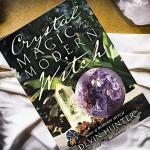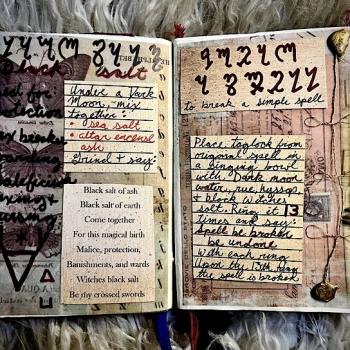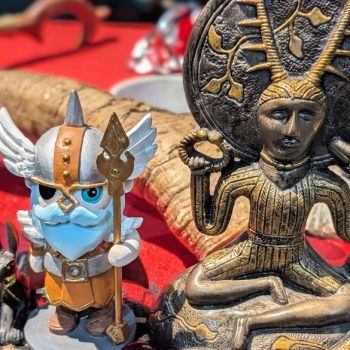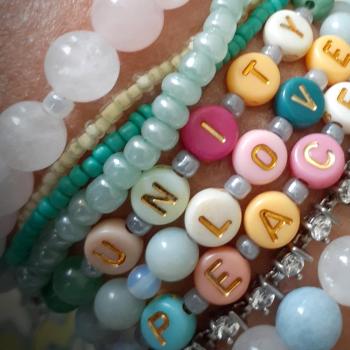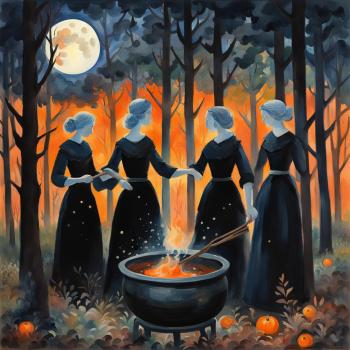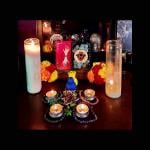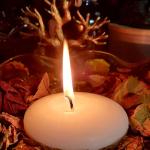More people are turning to witchcraft every day as a means for manifesting their desires. As a Crone witch with more than 30 years of practice behind me, I think a lot about how new witches are learning the craft, and where the bulk of their information is coming from.
When I first began to practice, there were maybe a dozen or so books on witchcraft in print—if you could find a shop that carried them. Most books focused on Wicca. Supposedly there were covens everywhere, but it wasn’t like you could find your local witches listed in the yellow pages. A neophyte witch had to do some work to pursue the path.
Now we have hundreds of books to choose from, covering many different traditions. There are metaphysical bookstores and occult shops where new witches can connect to the witching community. There are witchy or pagan gatherings held all across the country.
And of course, we have the internet, where witch blogs, vlogs and podcasts abound. Witches have access to a virtual realm of information at their fingertips. They can delve into the history of witchcraft to understand its roots. There are even online witch schools if one is inclined to formal study.

Or you could just build your practice from memes.
Memes are everywhere on social media—tasty, byte-size pieces of eye candy, full of advice, but short on substance. In the witching spaces, an industrious witch could take screen shots, print them out and build a deck of witchy instruction to practice by (copyright issues aside).
I’m being sarcastic, of course. There’s more to witchcraft than what fits in a meme, and you can find it if you take the time to look further. In other words, a meme might be a good starting place, but it doesn’t end there.
One popular meme is currently making the rounds in many of the witchcraft groups and pages I hang out in on social media is A Witch Who Cannot Hex, Cannot Heal. At face value, it sounds great, but what does it really mean? Where did it come from? Is it based in witch crafting tradition, or is it just something somebody made up?
Hexing or Cursing – Are They the Same?
The can’t hex/can’t heal statement never fails to open a floodgate of opposing opinions every time it’s shared. Witches who question the validity of the edict, take offense at the implication that they are somehow less of a witch if they don’t use baneful magick. Witches who do practice baneful magick latch onto the confirmation that they are doing it the right way. Some of them get all up on their broomsticks to set straight those who disagree or question the theory. Inevitably, it gets ugly.
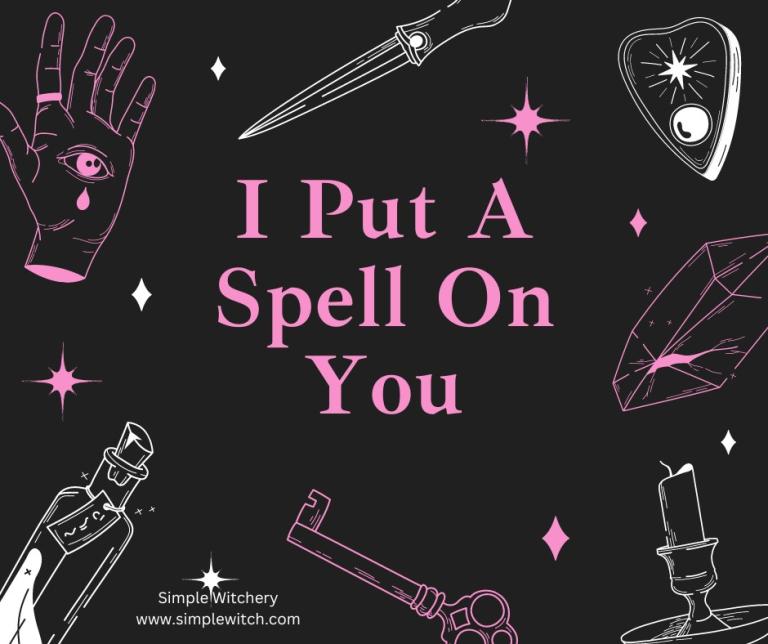
Regardless of where you take your stand, it’s important to ask the deeper questions of these meme messages, not just where they come from and whether it’s long-standing tradition, but how much validity does it have? What is the efficacy of practicing this way? Are the results any better than the alternative?
Gasp! You mean actually doing the hard work? Yes, because the first of the four pillars of witchcraft is To Know. If you don’t know what the pillars of witchcraft are, read my post here.
So What’s the Skinny?
The can’t hex/can’t heal meme making the rounds was part of a post published on Patheos Pagan in 2019, written by Dr. Cyndi Brannen, for her feature column, Keeping Her Keys. Brannen is an educated, well versed, experienced witch whom I studied under for a time. The meme has her brand on it, and the full article explaining the concept can be accessed at her website now.
Even without those breadcrumbs to follow, more information for deeper understanding is always only a google search away. Don’t be a lazy witch; do the work.
I well remember when Dr. Brannen wrote her opinion on hexing, and the ensuing discussion among her students and social media followers. My understanding of her teaching was that hexing and healing are two sides of the same coin, two aspects of the same power. How (or whether) we choose to use one or both is entirely our own decision.
But that isn’t the origin of the dictum. An earlier reference can be found in Starhawk’s Spiral Dance, published in 1979. Whether it was an original thought for Starhawk, something formulated from her own education and experience, or shared from some other source, I don’t know, but Starhawk is another well-known witch and respected thought leader in the Wicca tradition. So maybe there is something to the theory.
The question is, what did these venerable witches mean? To answer that, we must first look at the meaning of the word hex, as Brannen did in her article.
Hex as a verb comes from the German hexen meaning “to hex” and related to Hexe or “witch.” In American English, from Pennsylvanian German, hex meant “to practice witchcraft.”
As Brannen points out, this broad meaning of hex as being synonymous with witchcraft is the crux of the idea. “To be blunt, the true meaning of the expression is a witch that can’t witch, can’t heal. Hard to argue with that.”
Hex takes on the meaning of a spell around 1909 in America. It is compared to the Middle English meaning of the word, associated with the practice of occultism. This is likely when the word morphed into the meaning we most often think of today—a curse meant to cause harm to another. So, we have two very different, but related meanings of hex and hexing.
A dictionary definition of hex includes “charm” and “bewitch” as synonyms, definitely two words much less evocative of cursing or causing harm. Even so, an example sentence offered at Dictionary(.com) has negative implications. He was accused of hexing his neighbor’s cows because they suddenly stopped giving milk.
I think, however, we should remember that our American language is heavily influenced by patriarchal, Judeo-Christian ideals. So I have to ask, given the synonyms offered, is it not just as true to say, He was accused of hexing the neighbor’s cows because suddenly they gave the creamiest milk in the county?
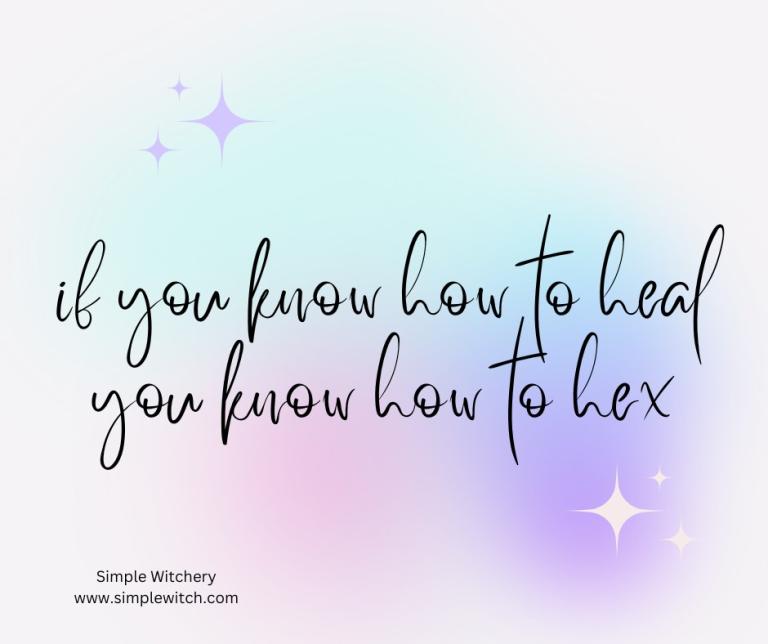
The truth of it is, a witch has both cursing and healing magick at their disposal because it all comes from the same power. Therefore, you don’t have to know how to hex to heal, but rather, if you know how to heal, you already know how to hex.
I’m willing to bet there are powerful healing witches out there who haven’t given a thought to how or why cursing works. They don’t have to because all magick works the same way—
Destructive magick works the same way as constructive magick. You form your intention, prepare your spell, raise your power and do the thing. It’s pretty simple.
This means that the meme is a truth, but a confusing one—or at least one that causes a great deal of confusion and contention by being misinterpreted.
Tea or Poison
A witch defines her craft and builds her personal power by practice, through trial and error in the beginning. What works for one witch, may not work for another. What works now, might not work later, or what doesn’t work now may later be the bomb!
A third learned and experienced witch that I admire, Martha Kirby Capo, editor here at The Agora and author of The Corner Crone, gives her opinion on casting spells that cause harm in Hex Your Cares Away. Her reasoning is that we are conduits of a great power that is both in and of all living energy. She practices with a healthy respect for that power which is far more “dynamic and forceful than her own.”
Capo says, “I need to be very careful about my will, my words, and my work. For me—and again, this is just my opinion—it means I cast my spells very sparingly and I hex not at all. It’s not that I cannot hex; it’s that I do not hex. Does that mean that I can’t heal? Absolutely not!”
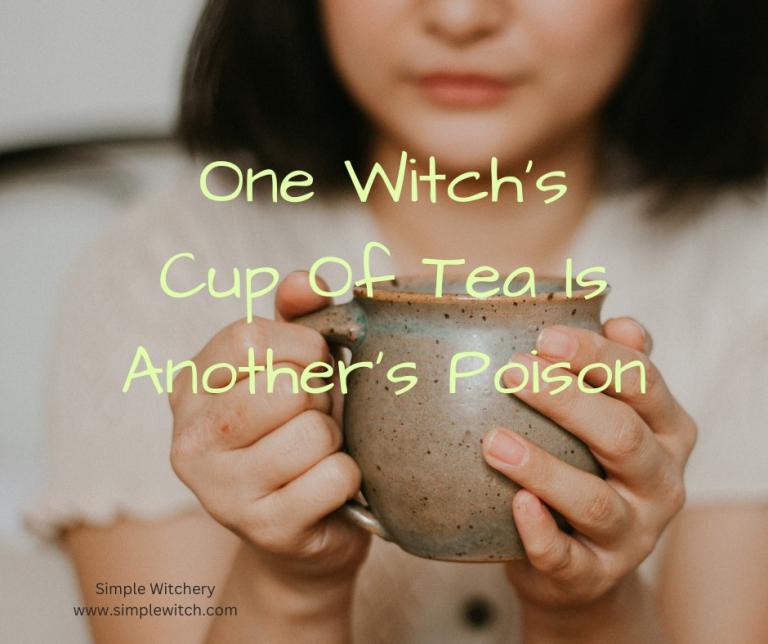
I agree with her on three fronts. First and foremost, it’s all opinion, everybody has one and everybody else gets different mileage from it. You can learn from elder witches with more experience, but you still need to test drive the vehicle yourself to understand the power, and how it works for you.
Second, my understanding of her reason for not hexing (you should read the full article and decide for yourself) isn’t necessarily or only fear over baneful energy coming back to the sender (threefold or not) but more so healthy respect of not wielding complete control over that much more powerful energy we tap into. Sort of like getting behind the controls of a jetliner because you know how to drive a car. Things can go wrong pretty fast, regardless of what was intended.
Third, I’ve had the good fortune at different times early in my practice, to be mentored by four elder witches (and by that I mean experienced). All were very knowledgeable in the ways of witching. Every last one of them had come to a place of doing less spell casting, choosing mostly protection and abundance magick. Instead these witches shaped their practice around more inward directed magick like devotion, meditation, and shadow work.
Now, with more than 30 years of practice behind me, I get it. As we learn to manifest our will without the need for spell casting directed at others, we grow beyond the desire for casting outward magick. There is still plenty of magick in our lives, but it is much more inwardly directed.
Hexing, Harm, Karma and the Rule of Three
Whether or not any spells invite a return of harm is, in my opinion, a valid concern and one that shouldn’t be scoffed at. Not being Wiccan, or just not believing in energy return in that way, isn’t a very strong argument against it. Witchcraft or not, energy can and does come back at you. Maybe not every time, but that’s a game of roulette, isn’t it?
It reminds me of the person who throws orange peels out the car window, but the window is closed and the peels fall in their lap. Or worse, the guy who hacks and spits a glob taken by the wind velocity of a moving vehicle, only to blow back into the rear window . . . Sooner or later, the ick we send out is going to turn around and stick to us or those connected to us.
I learned this the hard way, and I can guarantee that regardless of how careful you might think you are when casting your spell, the Universe, or Powers That Be, or deities (if that’s how you practice), interpret things differently.
I do practice baneful magick when I believe the situation calls for it, but I know I have to take full accountability for everything I send out, intended or not. So for me, in my craft, it’s do as I will and accept the consequences. Maybe there should be a meme for that . . .
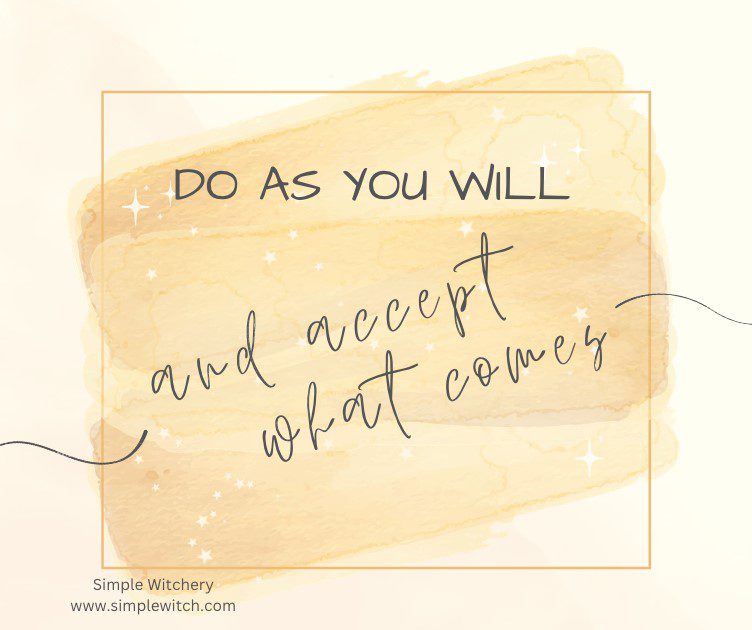
Still, as soon as a witch brings up the possibility of baneful magick coming back, there are always at least a few of the no hex/no heal witches who start throwing shade. Again, in my opinion, a little clarification on the facts could go a long way.
“An it harm none, do what you will,” is taken from the Wiccan Rede. The earliest mention of the Rede is attributed to Doreen Valiente, a contemporary of Gerald Gardener, the founder of Wicca. It is believed to be partly based in The Law of Thelema – the doctrine of the religion founded by Aleister Crowley. All of this dates only as far back as the first half of the 20th century. That’s not a long track record.
As a basis of my witchcraft, I always consider how traditional (or ancestor) witches might have practiced. These were wise women, healers, herbalists, midwives—labeled witches only by the paranoia of the patriarchal, puritanical culture of their times. There were no written theories or rules, no edicts for them to follow aside from cultural and family tradition. If there were covens, and that’s a big if, there may have been oaths and fealty to one another. Generally, though, these were just women practicing what we now call witchcraft. They did what they deemed necessary, including harm.
Simple logic supports this, and as I wrote in Right Relations—Holding The Space Between Generations, our blood ancestors were far more savage than we sometimes care to admit. They had to be brutal in order to survive. So once more— pretty darn sure they held no sway with harming none. So it’s one thing to state your choice, but another thing entirely to say your way is the right way, smarter way, or more effective way.
Power or Ego
Inevitably when the discussion turns to hexing (meaning cursing) there soon follows stories of witching gone wrong—a witch who cast specific harm to another and similar or worse harm befell the witch or their loved ones. Just about every witch has a story of the spell that backfired. It has happened to me.
But do I, or does any other witch, really have that much power? Magick is the manipulation of energy. When it comes to energy, there’s a lot of chaos in the equation; you never know when you might find yourself in the direct path of any given vibe, whether generated by you in the first place and just returning home to roost, or finding you completely by chance.
“Perhaps that is the lesson—to let go of the false sense of control, ours or that of any perceived higher power, and surrender to the inevitable vagaries of chaos.” – Willow Rose
In my case, a banishing I performed was the most successful spell I’ve cast to date, and the repercussions were equally as dramatic. But, the situation was at fever pitch already, something was bound to break with or without my magickal nudge. It has sense resolved (though it took years), and in hindsight I have to consider that perhaps it was always going to unfold in the way that it did, and my spell had nothing to do with it.
Or maybe it was my magick. That’s the thing about witchcraft—there is no proof, it’s all belief and opinion.
Step Away From the Gate
Maybe you believe there is a rigid system of checks and balances, and that you get what you give, good and bad. That’s your choice. I can’t prove your belief wrong any more than you can prove it right.
The bottom line is, everything Starhawk, Brannen, Capo (and even I) are saying is, when it comes to why witchcraft works, it’s all opinion. It may be based in a great deal of education, research and experience, but nothing else holds the same weight as your own personal experience. So do what works for you, and allow others the grace to do the same, without gatekeeping.
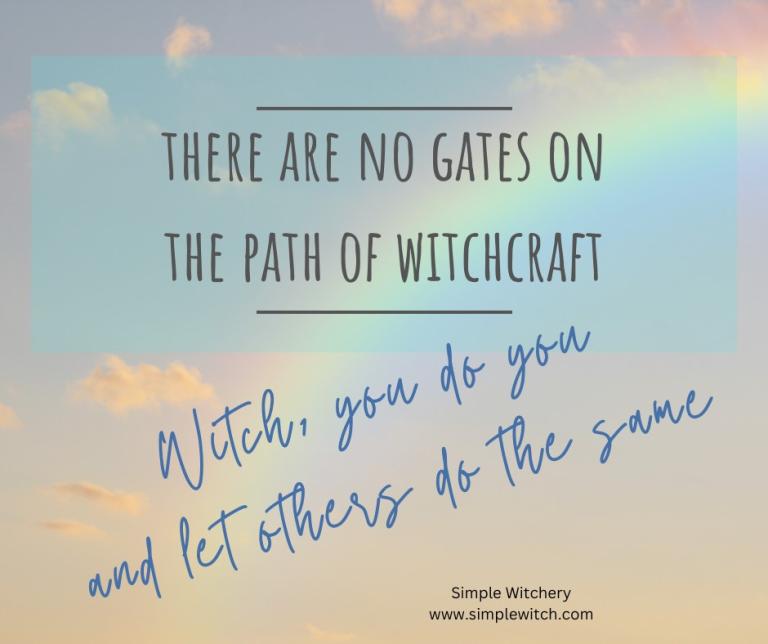
Practicing witchcraft, standing in your witch power, is about sovereignty and accountability. You can benefit from the knowledge of elder witches, the same as you can from any person who’s gone before you. Or, you can start at square one and figure it all out by yourself—and there’s nothing wrong with that.
What is wrong is pontificating to other witches about hard and fast rules. What is wrong is demeaning witches who identify as no harm practitioners. What is wrong is telling witches who hex that they shouldn’t. What is wrong is posting laughing emojis to witches who witch differently than you, or telling them they are naive and haven’t done their shadow work.
For the record, I find that most of the witches who throw down the shadow work card, have done the least work of self-examination, because a witch who has confronted her shadow has confronted her ego. The need to tell other witches how to do it, is pure ego.
So how is this whole post not one huge ego trip on my part? Let me recap.
- Witchcraft is a personal journey, what works for one doesn’t work for all. I know how I practice, I don’t have to impose it on others, but I’m a Crone witch who takes no prisoners and I will dang well point out when others are engaging in gatekeeping behavior.
- As a Crone, I am also concerned that new witches not get lost in the fray. I write tons of content (for no pay) to help them find their own way and stand in their own power. That is my service to the community.
- I’m a word witch. Besides practicing witchcraft, my real-life job for more than 30 years was in writing, publishing, communication and marketing. I write to help bring clarity to a subject.
- You are welcome in any of my social media spaces, where you can respectfully add to the conversation and share your way of witching. I will honor and respect your sovereignty, and shut down any witches who might come at you, regardless of where they stand.
So, witch, you do you, and have the good grace and respect to let others do the same.
Follow Simple Witchery on Facebook and check out my witchy feeds as the MADGoddess on Instagram and Pinterest.




